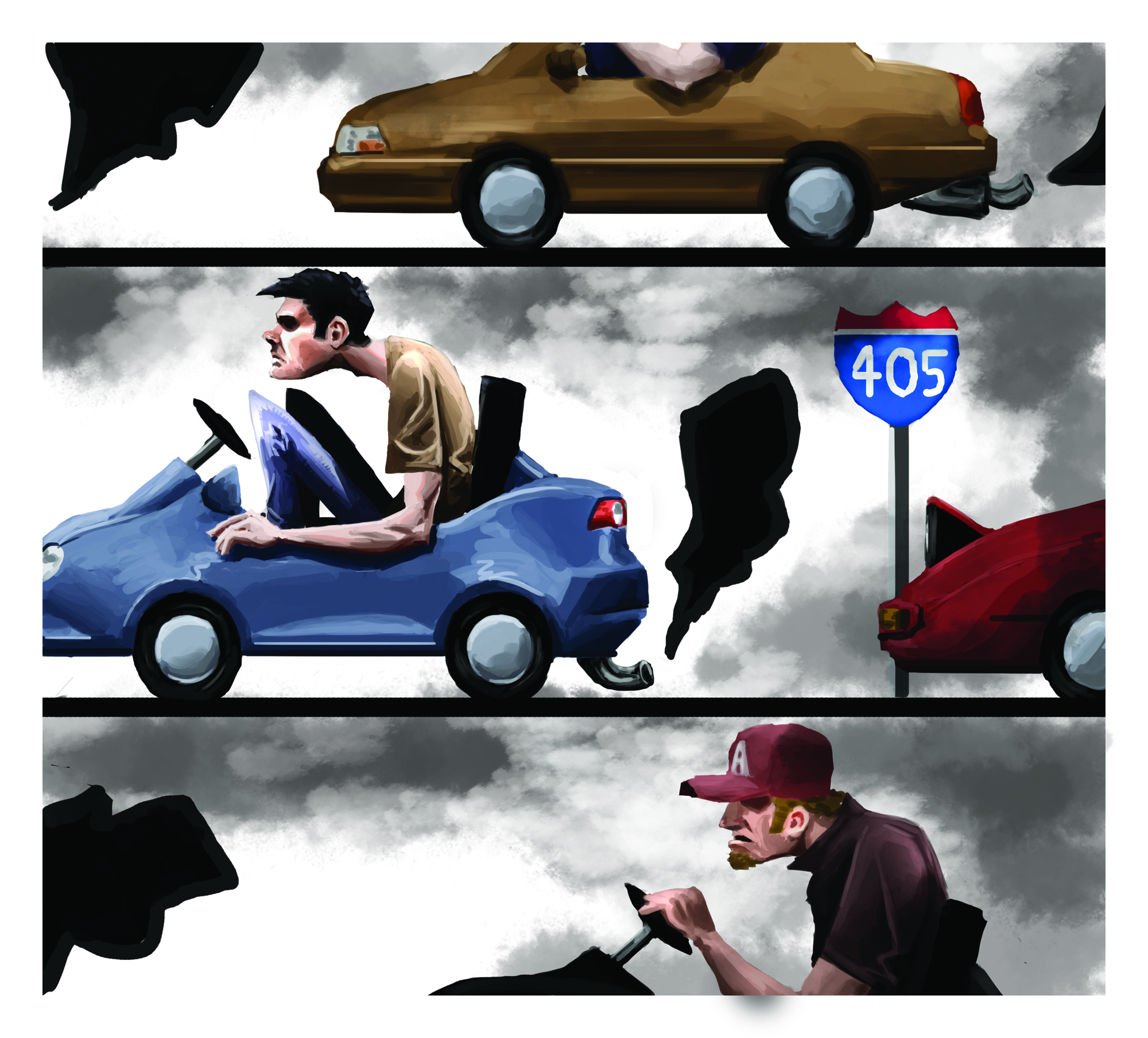High-speed rail projects need more investment to boost America’s economy

By Kia Makarechi
Feb. 28, 2010 10:21 p.m.
When it comes to transportation technology and investment, America is close to the bottom of the pile of developed nations.
France, China, Japan, Belgium, Italy, the Netherlands, South Korea, Spain, Taiwan and Britain all have developed hundreds if not thousands of kilometers of high-speed and magnetically levitated (maglev) rail lines, with some dating back as far as the 1960s.
Spending on high-speed rail lines can be hard to stomach in a time of vast economic fallback, but in the long term, these projects will not only be of practical benefit but will also prove to be the key to economic recovery.
In the coming decade, America may finally get its first taste of the efficiency and technological accomplishment that is high-speed rail.
In addition to fully funding HSR projects, the government must take careful note of a freeway and road system that is nearing decrepit conditions and has suffered at the hands of meager state and federal transportation spending in the face of continued population growth.
Governor Arnold Schwarzenegger’s plan (which is not a new one) of putting a second level on top of the existing 405 is interesting, but sources inside the industry tell me that this project will likely never be realized ““ in large part because of the collapse of the Interstate 880 Highway in Oakland during a 1989 earthquake and the massive cost such a project would entail.
Another option being discussed are “HOT (high-occupancy toll) lanes,” essentially lanes that require a toll to drive in. The idea is that traffic would be lower in these lanes and the tolls would simultaneously push people off the freeways into mass transit and generate funding for further construction.
But without an effective mass transit system in Los Angeles (i.e. one that doesn’t require multiple bus and subway changes to get from West Los Angeles to downtown), this is more of a show than it is a solution.
Brian O’Neill, a geotechnical engineer and mass transit expert with Kleinfelder Incorporated (a leading engineering firm involved in HSR projects in the state and around the nation) has over a decade of experience in large-scale public transportation.
He told me that California’s investment in HSR has already created hundreds, soon to be thousands, of jobs.
Though California is not the only state floating HSR plans, O’Neill said that the Golden State is “furthest along with regards to planning and preliminary design,” adding that the private sector is encouraged by the “very well thought-out business plan comprised of a multipronged funding mechanism that won’t saddle only the public or only the private sector.”
This is good news, seeing as the project is projected to cost as much as $50 billion. Details of the funding scheme O’Neill described include federal matching funds (which critics note have yet to be approved), state funds, $2 billion already awarded from the stimulus, and contributions and investment from the private sector that would be rewarded with secured contracts for continued business.
O’Neill praised the California HSR project, noting that it is the largest infrastructure project in state history and would contribute a total of 100,000 to 200,000 jobs (Siemens Mobility ““ a leading manufacturer of the HSR cars ““ has already pledged to do all of the actual building of cars and rail in the United States).
A cursory glance at America’s transportation history proves that lawmakers have generally moved away from supporting massive infrastructure in the ways of the past ““ ways that made the Dwight Eisenhower National System of Interstate and Defense Highways possible.
“Think of the pride we take in the Golden Gate Bridge, the Brooklyn Bridge or New York’s subway system,” O’Neill said. “These projects are not only a backbone for the economy, but they comprise high value infrastructure that is owned by the public.”
A prime example of the good that can come from investment in mass transit is the Bay Area Rapid Transit District, which O’Neill himself worked on over the past decade.
The network serves over 300,000 people a day, and many agree that without it, the Bay Area would never have grown into one of the state’s largest metropolitan regions.
O’Neill admits that the technology on BART is outdated. In Tokyo, 300,000 people a day ride high-speed rail trains.
Though the Obama administration should be lauded for awarding $8 billion to high-speed rail projects around the nation (including Florida, California and 29 other states), it’s not nearly enough.
In comparison, China allocated $293 billion to domestic high-speed rail projects as part of its plan to connect all of the mammoth nation’s major cities with almost 10,000 miles of dedicated high-speed rail lines by 2020.
By 2020, it’s unclear how much of the San Francisco to Los Angeles route will actually be built.
Vice President Joe Biden had it right when he said that investment in HSR is “a down payment on a truly national program.”
It’s a dream O’Neill and HSR advocates share. When discussing the various HSR projects throughout the nation, O’Neill could not help from giving voice to the transportation engineer’s ultimate dream: “There is a hope,” he told me, “that maybe one day all of these projects ““ from Florida to California ““ will match up.” If these dreams are realized, American schoolchildren might have to learn about another Golden Spike.
E-mail Makarechi at [email protected]. Send general comments to [email protected].


